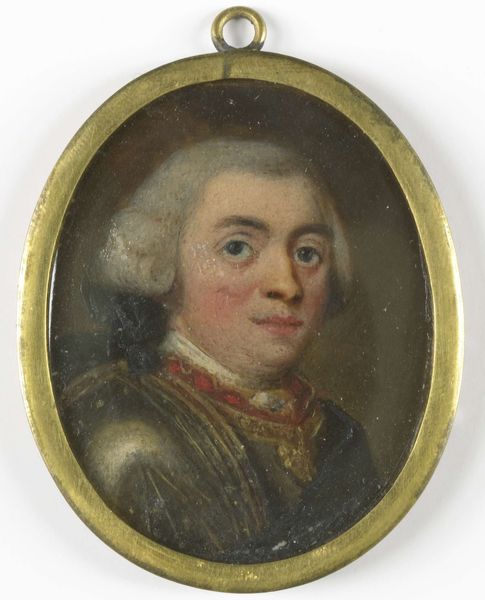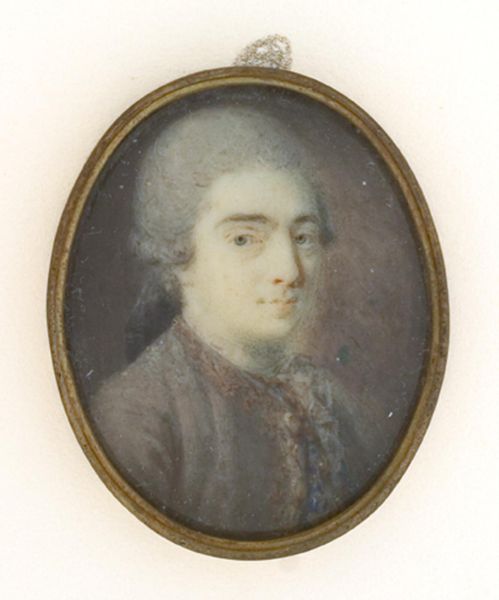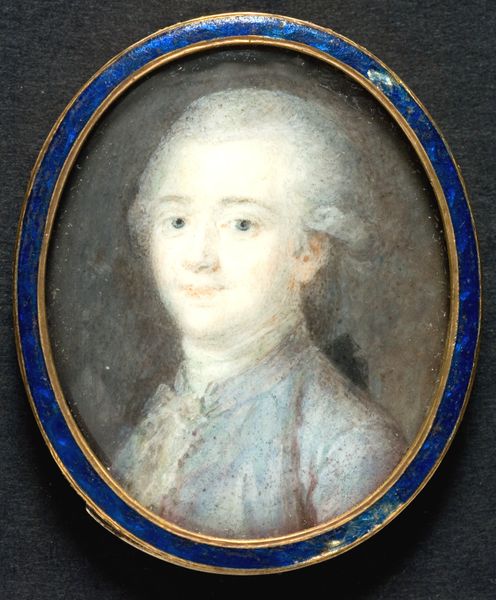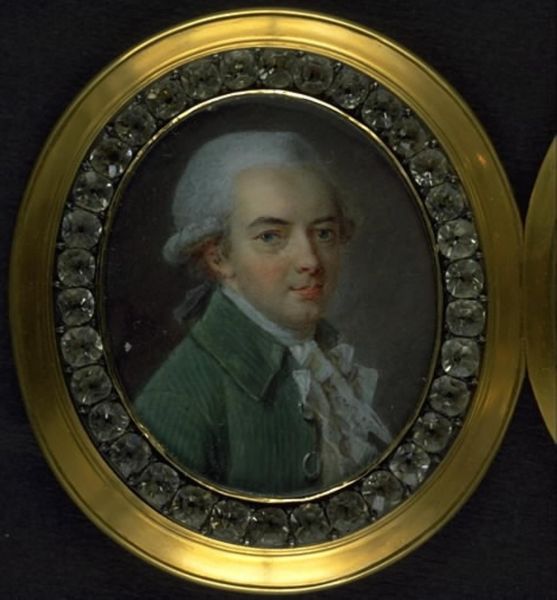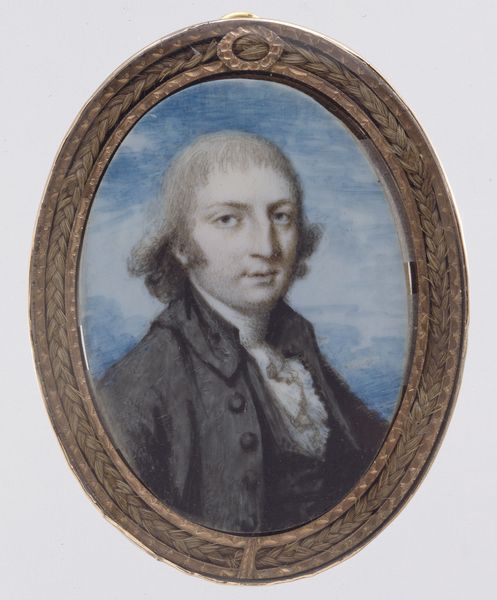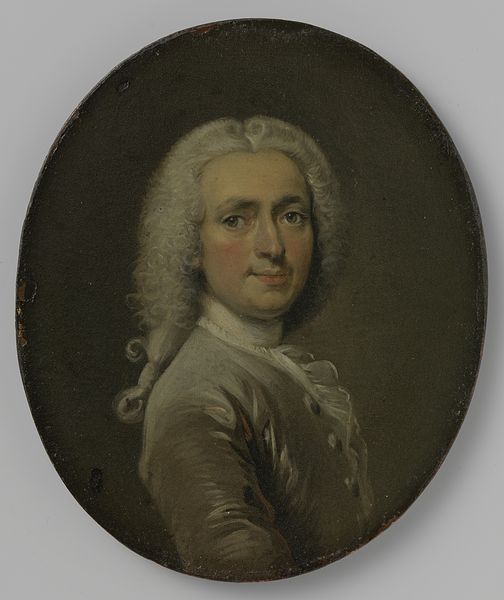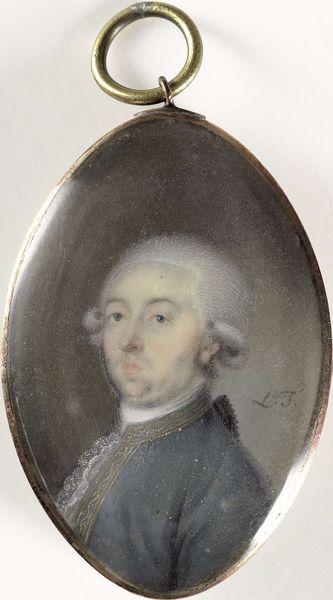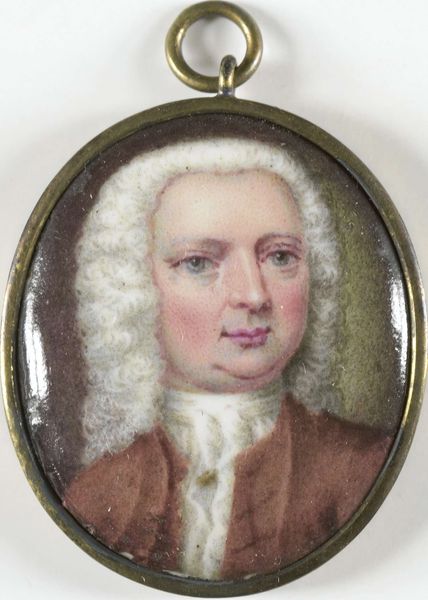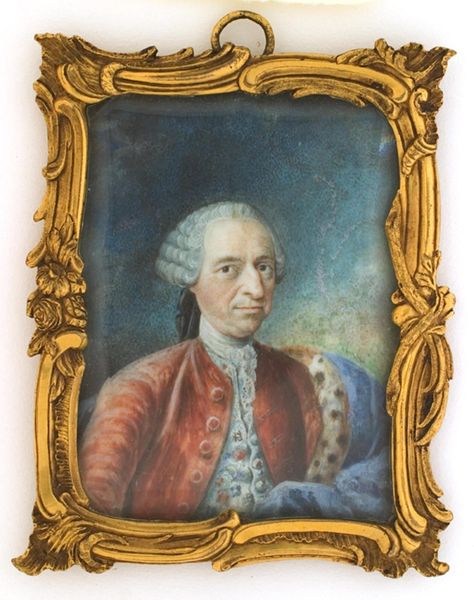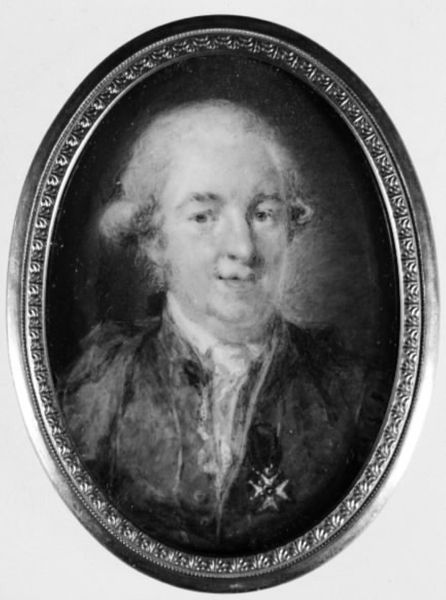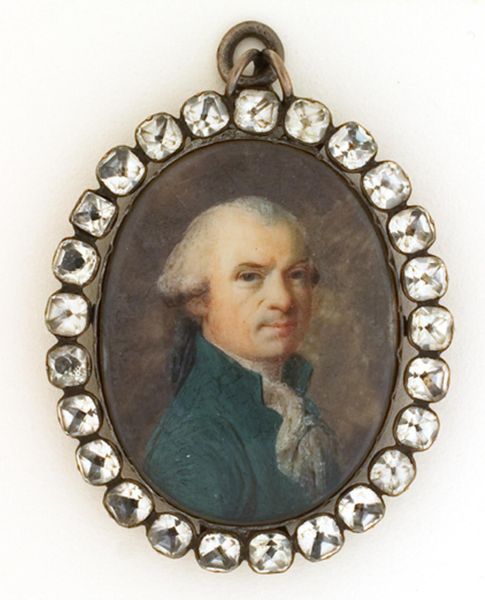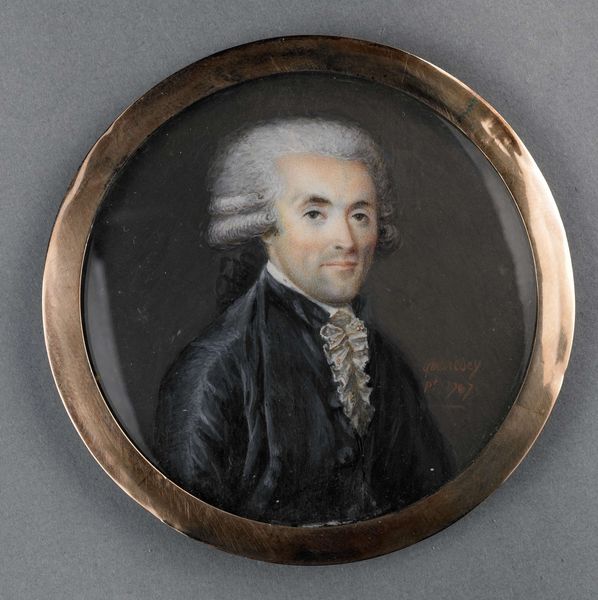
Portrait of a Man, possibly the Sculptor Johan Tobias Sergel 1751 - 1831
0:00
0:00
painting, oil-paint, ivory
#
portrait
#
painting
#
oil-paint
#
sculpture
#
oil painting
#
romanticism
#
ivory
#
miniature
Dimensions: 4.3 cm (height) x 3.5 cm (width) (Netto)
Editor: Here we have François Dumont’s "Portrait of a Man, possibly the Sculptor Johan Tobias Sergel," created sometime between 1751 and 1831. It’s an oil-on-ivory miniature, and something about the detail feels incredibly intimate. How do you interpret this work? Curator: Intimacy is key here, I think. Miniatures like these weren't just decorative; they functioned as potent symbols of social connection, circulated within specific, elite social networks. Consider the materiality: ivory, oil paint… both precious commodities signaling status. What kind of power dynamics are at play in creating and commissioning a work like this? Editor: Power dynamics… so it's more than just a pretty face? Curator: Precisely! Think about the sitter. Assuming it is Sergel, we have a celebrated sculptor, an artist himself. Dumont, by painting Sergel, acknowledges and perhaps even elevates the status of the artist in a society that often marginalized creative labor. And think of the labor involved in producing such an object - each brushstroke contributing to a carefully constructed image. Editor: So, it's a power play on multiple levels: material, social, and even artistic? The act of creation and exchange becomes a political act. Curator: Absolutely. This miniature, therefore, becomes a fascinating lens through which we can examine notions of class, artistry, and representation during the late 18th and early 19th centuries. Who is seen, who creates, and who possesses? These are never neutral questions. Editor: That makes me see it completely differently. I was focused on the visual, the technique... Now I am thinking about the wider social framework. Curator: And that reframing, that critical lens, enriches our understanding and, hopefully, helps us to challenge conventional narratives surrounding art history. It becomes less about aesthetic beauty and more about understanding the tapestry of power that shapes our cultural landscape.
Comments
No comments
Be the first to comment and join the conversation on the ultimate creative platform.
